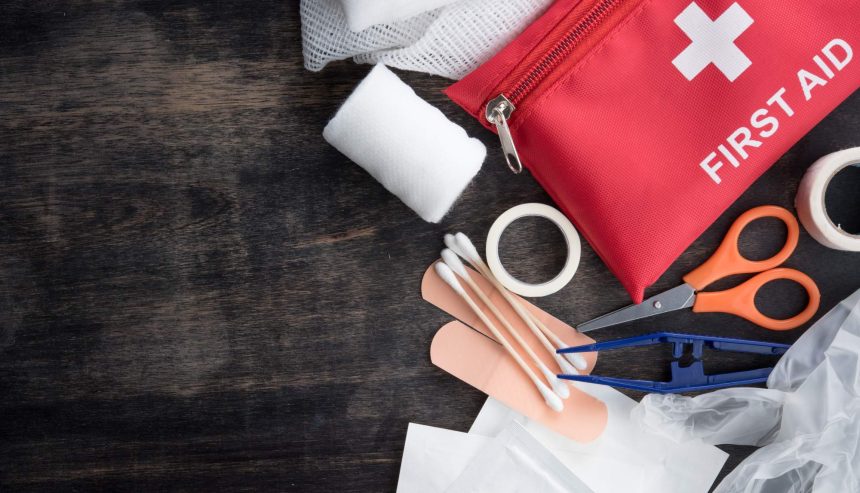Did you know that only about half of the population know basic first aid skills? Considering that these skills could save a life at any moment, it’s a number we all should strive to change.
That’s why we’ve collected the top first aid skills that everyone should know. These skills will guide you through any life-threatening situation and give you the confidence to help.
Learn more down below!
1. First Aid Supplies
The first part of any first aid training is to understand how important the right supplies are in an emergency situation. If something goes wrong, you’ll need equipment to help you out.
Make sure you have a first aid kit available to you at all times. If it’s not possible to keep one in the room with you, then at least know where to find one when you need it. The best first aid kits always include items such as:
- Bandages and gauze
- Pain killers
- Antiseptic wipes
- Antibiotic cream
- Scissors
- Digital thermometer
- Distilled water
- Tape
- Tweezers
- Tourniquet
- Antihistamines
- Emergency cellphone
- Batteries
It’s vital to cater your first aid kit to your personal needs as well. If there’s a certain type of medicine you’d need in an emergency, make sure to put it in your first aid kit!
2. The Three P’s
Preserve life. Prevent injury. Promote recovery.
These three P’s are the heart of all emergency procedures. You must keep them in mind whenever you find yourself administering first aid. They’re the ultimate goal you’ll want to strive for whenever helping yourself or anyone else.
The good thing is that they’re all easy to remember and simple to perform. When you keep them in mind, you’ll provide much better first aid to the patient.
Repeat these simple phrases over and over until you have them memorized. With their help, you’ll have an easier time remaining calm and not allow panic to settle in when an emergency happens.
3. CPR
Everyone knows about CPR but few people know how to administer it in an emergency. If used incorrectly, you could end up harming the person more than you realize.
The good news is that the CPR process isn’t too difficult to learn.
The best thing to do is to go to a proper training facility. A day in training can give you a full understanding of how to go through all the CPR steps in the right way. The medical experts will show you all the correct ways in which to use CPR so that you do more good than harm.
The more you know, the better you’ll be at using this life-saving skill!
4. Treating Sprains
Sprain treatment helps the injured person feel a lot of relief of pain and prevents further injury. It’s a vital skill to have because sprains often happen when we are outside of the home with no easy way to reach help.
You’ll want to support the sprain by wrapping it with a tight bandage. Make sure the bandage isn’t so tight that it cuts off circulation or else you’ll cause more damage.
Apply ice to the wounded area and rest until the person can see a doctor for further treatment.
5. RICE
Whenever you deal with sprains or other joint injuries, it’s important to remember the RICE acronym. It’s the perfect way to tackle these kinds of injuries so that the person heals as fast as possible.
Rest the wounded joint so that no further damage occurs.
Ice the area so that swelling goes down and inflammation doesn’t cause more problems. Make sure to alternate between ice and no ice in 20-minute intervals.
Compress the injury to lessen the chance for further swelling. Compression also gives added support to the injury.
Elevate the wounded limb so that it rests above heart level. This goes even further to aid against swelling and promotes good healing.
By remembering these four steps, you’ll have no trouble providing relief to anyone with an injury.
6. Caring for Open Wounds
Open wounds are one of the more frightening situations anyone can deal with. If you don’t act fast, the person may lose too much blood. It’s easy to panic when faced with a gushing open wound, but there are many things you can do to help.
The first thing to do is to prevent any more blood from leaving the injured person’s body. Find a clean piece of cloth and apply pressure to the wounded area. This slows down the flow of blood and gives you more time to wait for emergency services.
Wrap a bandage around the wound after applying antibiotic cream to the area. A superficial wound can still be a cause for concern. If not treated, it could get infected and turn into a bigger problem down the road.
If the wound is very deep, then don’t apply any cream and keep steady pressure on the wound until the medics arrive.
7. Recovery Position
When you encounter a person who’s unconscious but doesn’t have any other outward injuries or wounds, you need to put them in the recovery position. This prevents their airways from closing up and also stops them from choking if they vomit while still unconscious.
The best positioning is to have them on their side, with one knee bent at a 90° angle. Their lower arm needs to be stretched out with the palm up, while their other arm is tucked underneath their head. This gives their head support and prevents them from rolling over too much to either side.
This keeps the person protected until a medical team arrives to help.
Knowing These Basic First Aid Skills Keeps You and Your Loved Ones Safe
Now you’re equipped with the knowledge to help out in a scary situation. It’s a good idea to come back and read through this guide every couple of months. This way, you’ll keep your skills fresh for any emergency.
Don’t forget to share this with your friends and family as well. The more basic first aid skills everyone knows, the safer everyone stays!
Want to learn even more? Check out the rest of our Health section for useful tips and tricks that’ll help you in all kinds of situations!














